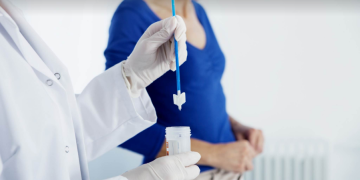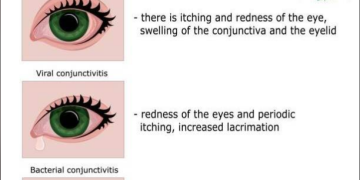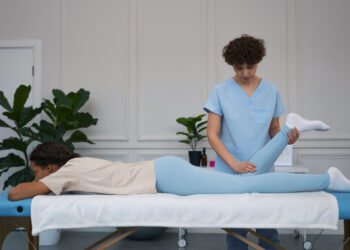Conjunctivitis, commonly referred to as pinkeye, is a prevalent eye infection frequently observed among young children. Its contagious nature often results in outbreaks within preschools and playgrounds. Nevertheless, pinkeye can affect individuals of all ages, including teenagers and adults.
Pinkeye manifests as an inflammation of the conjunctiva, which encompasses the white part of the eye and the inner eyelids. Despite its potentially alarming appearance, pinkeye is generally a minor infection and rarely poses a serious threat.
In the event that a child displays symptoms of pinkeye, Consult with the best paediatric care in ahmedabad is crucial. While certain types of pinkeye may resolve on their own, others necessitate proper medical treatment.
Causes of Pinkeye:
Infectious pinkeye, which is transmissible to others, can be instigated by various bacteria and viruses that also contribute to colds and other infections, including ear and sinus infections, as well as sore throats. On occasion, it can be caused by the same bacteria responsible for chlamydia and gonorrhoea, two sexually transmitted diseases (STDs).
Conversely, some instances of pinkeye are noninfectious and encompass:
- Allergic conjunctivitis, which frequently occurs in children with other allergic conditions such as hay fever. Triggers comprise grass, ragweed pollen, animal dander, and dust mites.
- Irritant conjunctivitis, triggered by irritants like air pollution or chlorine found in swimming pools.
Symptoms of Pinkeye:
Characteristic signs of pinkeye encompass the distinctive red or pink colour that lends the infection its name, along with discomfort in the affected eye. Children might liken this sensation to having sand in their eye. Frequently, there is eye discharge, conjunctival pain, and swelling. Some children may also experience swollen eyelids or light sensitivity. Pinkeye can impact one or both eyes. Allergic conjunctivitis often entails symptoms of itchiness and watery eyes.
Contagion of Pinkeye:
Pinkeye is contagious when triggered by bacteria or a virus:
Bacterial pink eye can spread to others once symptoms manifest and continue until eye discharge ceases or for up to 24 hours after commencing antibiotic treatment.
Viral pink eye is generally contagious before symptoms emerge and remains so throughout the symptomatic phase.
Allergic and irritant conjunctivitis are not contagious.
Transmission of pinkeye can occur through direct contact with an infected person or objects touched by an infected individual, such as used tissues. During summer, pinkeye can disseminate through contaminated water or shared towels. It can also spread through coughing and sneezing. Furthermore, transferring the infection from one eye to the other is feasible through eye touching or rubbing.
Diagnosis and Treatment of Pinkeye:
If pinkeye is suspected, consulting with the best paediatrician in Ahmedabad is vital to determine the cause and appropriate treatment. Given the resemblance of symptoms to other serious eye conditions, children displaying severe pain, changes in eyesight, eye swelling, or light sensitivity should undergo examination.
If an in-person visit is challenging, a “video visit” might be an option, facilitated by telehealth services that enable remote diagnosis and treatment. When antibiotic treatment is necessary for bacterial pink eye, it typically involves the administration of antibiotic eye drops or ointment.
Relieving Symptoms:
Administering eye drops multiple times a day to children may be challenging. Placing drops in the inner corner of the closed eye can facilitate their entry when the eye is opened. Alternatively, antibiotic ointment can be applied in a thin layer at the meeting point of the eyelids, where it will liquefy and enter the eye.
For allergic conjunctivitis, best paediatric care in Ahmedabad may prescribe anti-allergy medication, available in pill, liquid, or eye drop form. Discomfort can be alleviated with acetaminophen or ibuprofen as per the recommended dosage.
Parental Assistance:
Using cool or warm compresses on the eyes can enhance a child’s comfort. Cleaning the edges of the infected eye with warm water, gauze, or cotton balls can remove crusts of dried discharge that cause eyelids to stick together in the morning.
For children who wear contact lenses, it might be advised to refrain from using them until the infection subsides. Proper disinfection of lenses and their storage case is crucial before allowing the child to wear them again.
Isolation from school, childcare, or summer camp is typically recommended for children with contagious conjunctivitis for a brief period.
Prevention and Hygiene:
Infectious conjunctivitis is highly contagious, underscoring the importance of teaching children thorough and frequent handwashing with warm water and soap. They should avoid sharing eye drops, tissues, eye makeup, washcloths, towels, and pillowcases.
After handling an infected child’s eyes, caregivers should practise meticulous hand hygiene. Used items like gauze or cotton balls should be discarded, and towels and linens used by the child should be laundered separately in hot water to prevent contamination.
For children predisposed to allergic conjunctivitis, keeping windows and doors closed on high pollen days, as well as frequent dusting and vacuuming, can limit exposure to allergy triggers. Irritant conjunctivitis prevention revolves around avoiding the causative irritants.
Early Medical Attention:
If pinkeye symptoms persist after 2 to 3 days of treatment, or if left untreated for a week, consulting with the best paediatric care in Ahmedabad is advised. Heightened swelling, redness, tenderness in the eyelids, and fever warrant prompt medical attention, as these symptoms could indicate the infection has extended beyond the conjunctiva and necessitates further treatment.
Conclusion:
Pinkeye, or conjunctivitis, is a common yet potentially contagious eye infection that primarily affects children but can impact individuals of all ages. While often minor, proper diagnosis and treatment are essential. Vigilance in maintaining hand hygiene, personal items, and environments can help prevent its spread. Swift medical attention and adherence to prescribed treatments are crucial for a swift recovery. By fostering good hygiene practices and promptly consulting with the best paediatric care in Ahmedabad, the impact of pinkeye can be minimised, ensuring optimal eye health and overall well-being.




































Discussion about this post